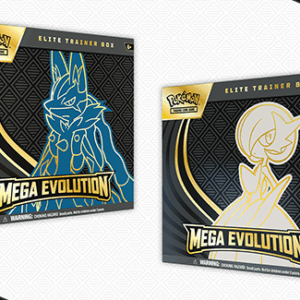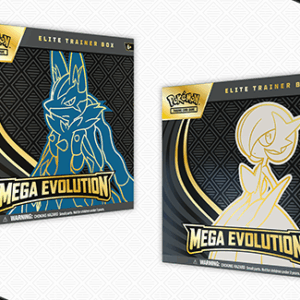The world of sports memorabilia is akin to a bustling marketplace at dawn—a mix of anticipation, excitement, and a bit of the unknown. Among the treasures on the metaphorical stalls stands the illustrious 2003 Topps LeBron James rookie card, number 221, holding court like a monarch among loyal subjects. This card, a beacon for basketball aficionados, is more than just a piece of printed cardboard—it’s a time capsule that bridges the bygone era of classic paper Topps with the shiny promise of the chrome era.
Picture it: the young LeBron, poised and ready to take the NBA by storm, frozen in an image on the card that might as well be a snapshot from a royal procession. It’s a piece that inspires nostalgia and intrigue in equal measure—a sentiment echoed by both veteran collectors and novices easing back into the hobby. When friends with rekindled interests start asking, “Where should I begin my collection?” this card often surfaces as the starting point, the cornerstone of a well-rounded portfolio.
While the hobby world is peppered with flashier and rarer LeBron rookie cards, let’s not confuse glamour with substance. The Topps base edition of his rookie card holds an enduring appeal, akin to a classic novel re-discovered on a well-stocked bookshelf. It’s the card that introduced many to the sensation of owning something foundational, yet attainable. There’s a comforting rhythm to its availability across various grades and a palpable excitement as pristine copies never seem to gather dust in the marketplace.
Even as the sands of time shift, the market’s response remains crystal clear. From mid-August 2025, eBay witnessed a parade of bidding frenzies for PSA 10 graded versions, with auction hammers landing rhythmically between two thousand to two thousand one hundred dollars. This pricing consistency paints a picture as neat as an expertly curated exhibit, showcasing why this card isn’t just skating by on recognition alone.
A wider lens reveals a reassuring stability. By late August, data from Card Ladder documented a PSA 10 sale at two thousand five hundred thirty-one dollars—a tick above usual eBay prices, yet well in line with a gentle upward trend evident since the budding days of spring. This isn’t a rollercoaster with the wild twists and turns of speculative mavericks; it’s a steady ride propelled by tangible collector engagement.
Yet, Topps was never one to leave its canvas half-embellished. Beyond the staple base set, they crafted a lineage of rarer variants: the Black Border limited to five hundred, the Gold edition to ninety-nine, and a First Edition stamp variant satisfying the hunger for rarity sans serial numbers. Together, these iterations form a collector’s palette—each adding depth to the LeBron narrative found within price tools and comprehensive checklists.
The Topps Collection offers a quirky offshoot—the photo variation from its factory set. While it may have the air of an eccentric cousin, in gem mint condition it provides a delightful off-the-beaten-path journey alongside its mainstream relative.
Grading, naturally, is the sorcerer’s wand that shapes this enchanting tale. The card’s robust PSA 10 population ensures it trades like a blue-chip stock rather than an elusive ghost tale. Yet, the financial and psychological gulf between a PSA 9 and PSA 10 is very real. Newcomers testing the waters can find raw versions priced in the 250–300 dollar range, while PSA 9s settle in comfortably around the four hundreds. Here, as in any discerning endeavor, a keen eye for centering and surface visuals—alongside reliable seller feedback—can make all the difference.
For those who dabble with comparables as their chosen strategy, this month’s playbook reads simply: watch eBay evening auctions, expecting the hammer to fall between two thousand to two-one hundred, with the occasional spirited bidding war. A perfect study for price action enthusiasts, this card remains buoyant and visible to all who care to notice.
The ongoing debate between paper and chrome is as timeless as choosing between night and day. Chrome refractors may dazzle with peacock flair, but the paper Topps base card evokes memories of binders, starter sets, and retail hunts during the mid-2000s. It’s a storybook that chronicles the hobby’s evolution, capturing the passage from one era to another. Guides such as those from Cardboard Connection have immortalized this narrative, consistently placing the Topps paper edition high in the annals of must-have LeBron cards.
Centering is the oft-debated quirk of these cards, much like the perfectionist’s eye for sartorial symmetry. Its white borders make uneven margins painfully visible, while the Black Border variant can magnify the slightest edge imperfections. It’s these minor details that make an immaculate PSA 10 both a rarity and a marvel to behold.
For different budgets, the paths to ownership are varied yet clear. A PSA 9 offers an affordable taste of flagship elegance, maintaining decent liquidity. Meanwhile, a well-centered raw card can become a gratifying, long-term grade-and-keep project. Seekers of scarcity without shelling out for Black or Gold may find solace in the First Edition stamp’s exclusivity.
Indeed, the thrill of the hunt isn’t confined to past memories. Our Galaxy Rip Packs have sporadically featured 2003 Topps LeBrons, curating real chase opportunities without devolving into a fantasy extravaganza. While product offerings rotate, the potential excitement remains—a wink to those who find exhilaration in ripping packs.
Writing this in 2025 offers a vantage point where the card’s glory requires no embellishment. Its reputation is well-earned. The checklist alone—coupled with current bidding trends and its wide collector appeal—speaks volumes. Whether you care to hoard it for posterity, trade it among shows, or chase after its siblings in the Black, Gold, or First Edition categories, it remains anchored in the gravitational center that pulls the hobby’s orbit around its timeless allure.





